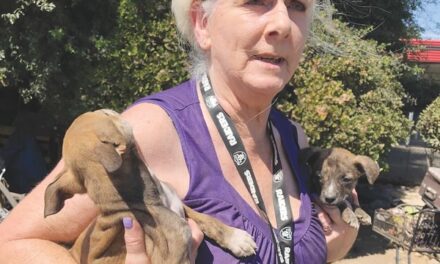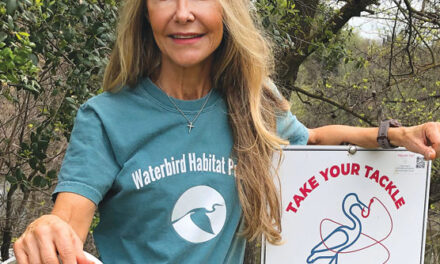Out of curiosity, I tried it. I went to the Petco Love website and clicked on “Lost.” Under “I Lost a Pet,” I entered Sacramento as a search location.
A second box popped up. “Upload a Photo: Our facial recognition technology will scan the database for possible matches.”
Per the instructions, I selected an image from my computer—the smiling mug of Jett, my black and white chihuahua mix. Once uploaded, I cropped the photo to focus on Jett’s face and hit “Search.”

In approximately 15 seconds, up popped another black and white chihuahua-looking mutt waiting for his owners at a rescue group 52.5 miles away in Vallejo. Of course, it was not Jett. She was soundly asleep on the floor next to my computer desk. But still—pretty impressive.
According to industry statistics, one in every three pets will go missing in its lifeline, an estimated 10 million a year. Searchable databases, like Petco Love Lost (formerly Finding Rover), use facial recognition technology to help missing companion animals reunite with their human families. Upload a photo of the lost dog or cat. The system will scan the image and match it with the mugs of found pets across the country.
“Our shelter takes in thousands of animals each year, most of which have a family that misses them very much and we want to help get those animals back home as quickly as possible,” says Phillip Zimmerman, manager at the city’s Front Street Animal Shelter, which began using Petco Love’s facial recognition technology this year. “We believe Petco Love Lost will be revolutionary.”
The key to ensuring this new technology works is for more pet owners to use it, says Ryan Hinderman, communications and customer service manager at Front Street. “It works very well, but not a lot of people know about it yet. Similar to how microchips took a long time to catch on, I think this has a lot of potential to be the next ‘big thing’ for finding lost pets.”
To help ensure the technology’s success, pet owners are encouraged to post photos of their companion animals to the nationwide database even—and especially—if the furry family members are safe and sound at home. Shelters, rescue groups and veterinary offices—and private citizens—upload photos of found pets, then compare them to dogs or cats already in the system. Next step—homeward bound.
“Animals that arrive as lost/stray are automatically added to the Petco Love Lost facial recognition platform,” says Dawn Foster, director of marketing and communications at the Sacramento SPCA. “Most every animal on our website has a high-quality ‘close-up’ photo of them looking at the camera. Not only does this help the animal catch the eye of potential adopters, it also provides a great photo for the facial recognition software to compare with photos provided by families searching for a lost pet.”
Facial recognition technology is not the only tool pet owners should use to find their missing animals, Hinderman adds. “For example, most lost cats hide within a five-house radius of where they went missing. The best strategy to find a cat is to knock on neighbors’ doors and ask if you can search their yard, or if they can take a look under decks, in sheds, etc.
“People should still be using Craigslist, Facebook, Nextdoor and put up big lost pet posters at the major intersections near their house.”
Also check local shelters—the county’s Bradshaw Animal Shelter, city’s Front Street Animal Shelter and Sacramento SPCA—which are required to hold healthy stray animals for three business days before they are considered for adoption or euthanasia. If the animal is not located, visit each shelter to file a lost pet report.
“The most important advice we can give any pet owner is to microchip your pet, keep the microchip contact information up to date and take a high-quality, close-up photo of your pet for physical identification purposes,” Foster says. “All of these pet identifiers can be uploaded to facial recognition databases before a pet is lost and are essential in reuniting a lost pet with their owner, whether they escape the yard or get displaced during a natural disaster.”
Remember, in addition to a microchip, a collar with an ID tag is the best and fastest way to bring your furry family member home.
“The facial recognition technology is incredibly accurate, easy to use and free,” Zimmerman says. “Even if the animal doesn’t have a collar and microchip, they still have a face.”
For more information, visit lost.petcolove.org.
Cathryn Rakich can be reached at crakich@surewest.net. Follow us on Facebook, Twitter and Instagram: @insidesacramento.
















